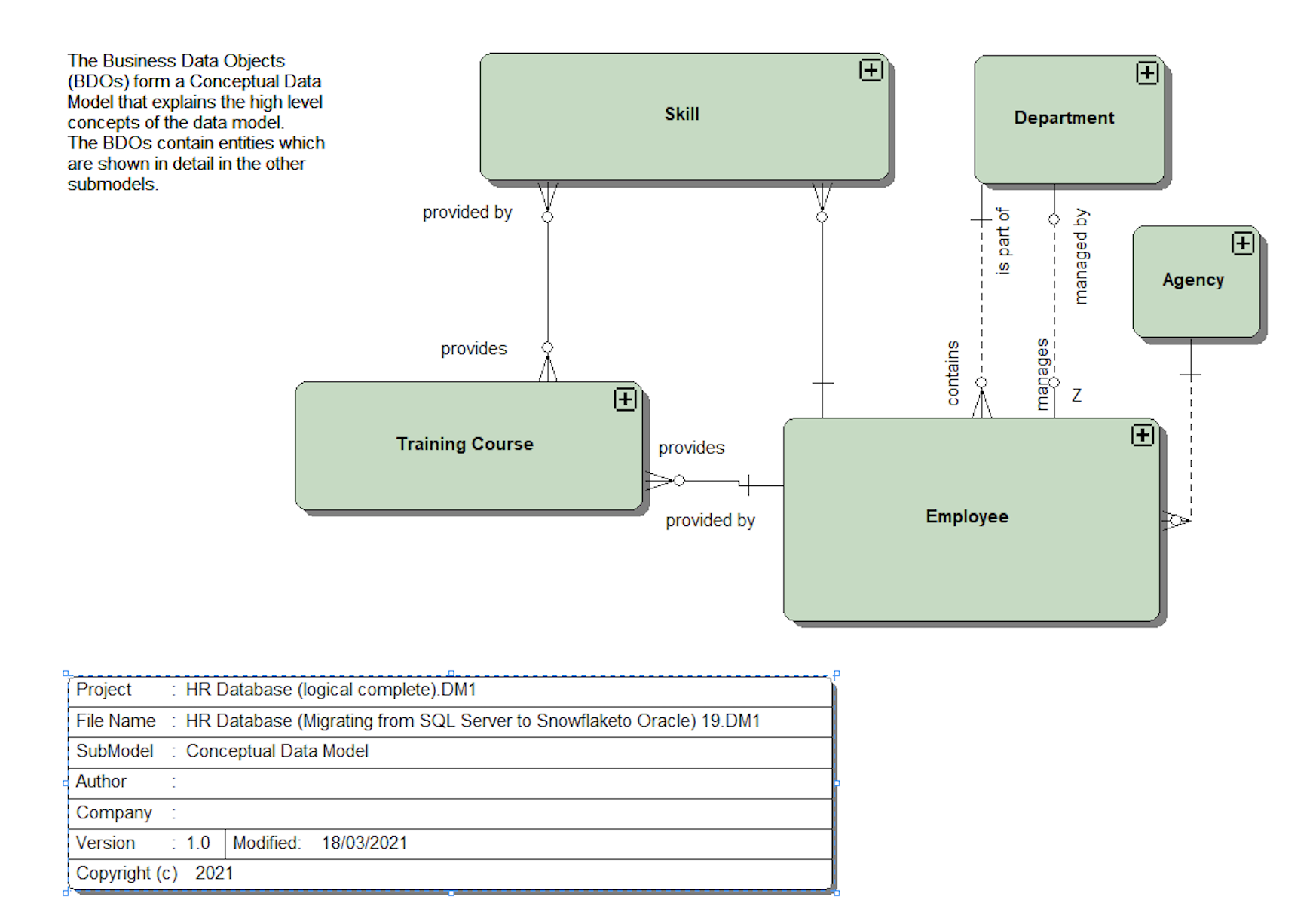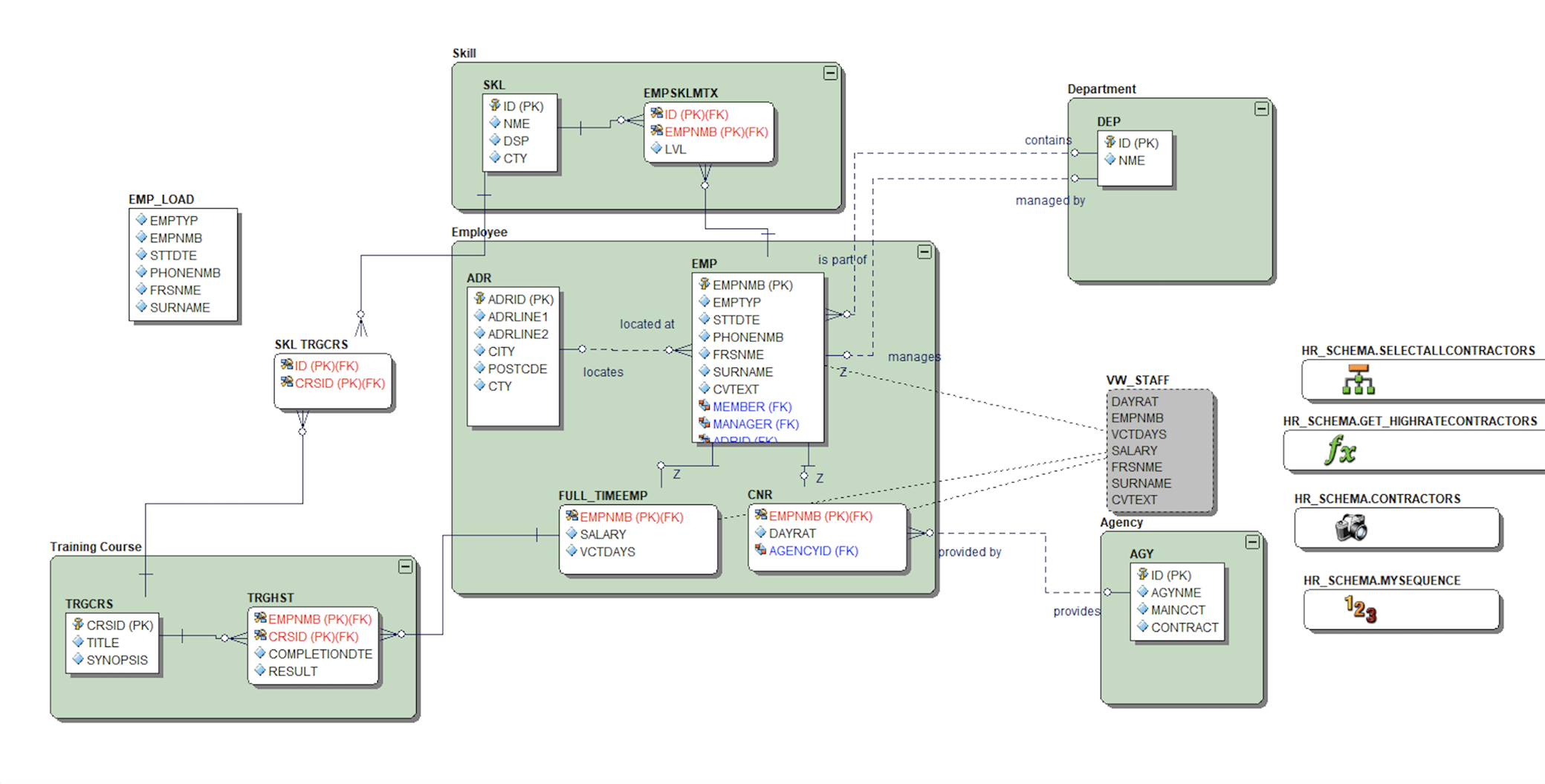Data modeling is the process of creating a visual representation of components of an information system to graphically illustrate the connections between data points and structures. Effective use of data modeling helps both technical and non-technical audiences understand how complex systems work.
One of the key goals of data modeling is to align business requirements with the way information is represented in enterprise information systems.
What is a Data Model?
A data model can be defined as the logical inter-relationships and data flow between different data elements in an information system or collection of systems. It is used to represent the data requirements and formats needed to fulfill the information needs of a business.
Data models are used to facilitate this communication during the different stages of system development. They take abstract business requirements and use an iterative process to refine them into physical representations that can be used to implement information systems and databases.
There are three types of data models: conceptual, logical, and physical. Each type of data model has a role to play at different stages in the data modeling process.
Starting with the conceptual stage, subsequent stages add further context and increased granularity to the information captured and represented.
Conceptual Data Models
Conceptual data models represent high-level and static business concepts and structures, unbound by current capabilities or specific system requirements.
Logical Data Models
Logical data models build on the information captured at the conceptual stage, defining entity types, data attributes, and the relationships that exist between entities. They provide an indication of an organization’s current capabilities, scope and limitations, and whether new technologies/processes may be necessary.
Physical Data Models
Physical data models are used to turn logical models into the internal schemas required for designing databases. At this stage, current or intended future-state capabilities are factored in. Physical data models should include enough detail to illustrate database design as implemented, or as intended to be implemented.
Create All Three Data Models for Best Results
This linear approach to creating data models is a key data modeling best practice that ensures critical information is not missed.
Collaboration is another key best practice for creating data models.
Moving from the initial conceptual models to a physical database representation demands a collaborative effort between business stakeholders and database designers and developers.
This is because modern enterprises have many data stakeholders. By addressing their needs and factoring in their input, organizations can ensure data models are built comprehensively, reducing the likelihood of oversight that can stall implementation.
How Data Modeling Helps Data-Driven Businesses Succeed
Data-driven businesses need data modeling to help cope with the incredible volume of data that is required to be processed and stored. The complexity of modern diverse data streams makes it challenging to accurately and efficiently use the collected information for business purposes.
Data modeling helps tame that complexity with visual representations of the relationships between data elements. This creates value by using enterprise data more effectively and ensuring that the needs of the business are met by the resulting databases and systems.
Let’s look at why an organization would use data models when designing a new database to address business needs. A new database is planned for development to handle the income stream for an innovative physical product. The three types of data models are used throughout the development process and can be represented by stages of data modeling.
The Three Stages of Data Modeling:
The Conceptual Data Model Stage:
A conceptual data model will be created by data analysts and the non-technical stakeholders who plan to use the new system that defines the type of data required to make it productive.
The Logical Data Model Stage:
Once the concepts are well-understood, a logical data model will be created that begins to take the conceptual knowledge of system requirements and defines the entities and relationships between them.
The Physical Data Model Stage:
Database developers will then be able to construct a physical data model by building on the logical model and implementing the representation of entities and relationships on whatever database platform makes the most sense.
Through the use of data modeling, organizations can develop a thorough understanding of the requirements throughout the development process. This helps avoid wasted time due to implementing database structures that do not accurately reflect the business needs that drove the development of the system in the first place. It also points the way toward the most efficient database platform for the implementation of the models.
Data Modeling Benefits
Businesses can achieve significant benefits through the use of data modeling. The benefits of data modeling include:
Improve Data Quality
The discovery and documentation of data sources result in standardized use of terms and data entities for improved data quality throughout an organization.
Enhance Database Design
Detailed data models help developers design databases that successfully address business requirements.
Promote Regulatory Compliance
Understanding and documenting enterprise data resources is an essential component of maintaining regulatory compliance.
Improve Business Intelligence
New opportunities are more easily discovered and acted upon with the greater degree of organizational accountability introduced by data modeling.
Increase System Integration Efficiency
Using data models for reverse and forward engineering helps teams successfully integrate new systems into the environment.
Data Modeling with IDERA
IDERA has the tools necessary to create the conceptual, logical, and physical data models your business needs. IDERA provides a comprehensive suite of tools for data modeling with capabilities including:
Create Conceptual Models with ER/Studio Business Architect
Business Architect provides teams with the perfect tool for creating conceptual data models to help design processes that align with business goals. It enables mapping and modeling of the relationships between people, processes, and data. Conceptual models can be exported to ER/Studio Data Architect for the creation of logical data models.
Try ER/Studio Business Architect for FREE
Create Logical Data Models with ER/Studio Data Architect
Data Architect lets teams build and manage entity-relationship (ER) data models to streamline and enhance the database development cycle. The tool can be used to discover and document existing data assets across the computing environment. Impact analysis can be performed to ensure that new policies or changes to data models, databases, or data fields are in line with business requirements and expectations.
Try ER/Studio Data Architect for FREE
Collaborate with ER/Studio Enterprise Team Edition
Enterprise Team Edition is a data modeling tool that fosters the collaboration necessary to create effective data models. The tool can be used to build a foundation for a data governance program and can discover and document existing enterprise data assets. The creation of global business data glossaries and definitions is fostered by the collaborative features of the tool which facilitate communication across all areas of the enterprise.
Get a Demo for ER/Studio Enterprise Team Edition for FREE
These excellent data modeling solutions can be evaluated with a free 14-day trial or demo that does not require a credit card and provides access to the tools’ full slate of features.


